Read Time: 5 Minutes Subscribe & Share
Omnivore Spoiler Alert
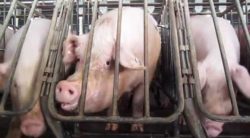 Although the title of Jonathan Safran Foer’s “Eating Animals” which was produced in 2009, suggests that it will be a dreaded anti- meat screed for ominvores, it is not. Rather, it is a somewhat scattershot film that gives you (if you will allow it the time) some important, if uncomfortable, facts of the dire and suicidal state of American factory farming and demonstrates that raising animals for food can be a healthier and time honored vocation. The USA may have been the breeding ground for the industrial production of food, but it has become a global issue as India, Brazil, and China have established a number of these “farms,” while the lure of cheap mass production is enticing other developing countries to grab a seat on the factory-farming carousel. What it should encourage you to do is to support producers who have turned away from factory farming in favor of raising animals for us to eat in a humane, healthy way — one that will be a comfort to our planet rather than a pestilence.
Although the title of Jonathan Safran Foer’s “Eating Animals” which was produced in 2009, suggests that it will be a dreaded anti- meat screed for ominvores, it is not. Rather, it is a somewhat scattershot film that gives you (if you will allow it the time) some important, if uncomfortable, facts of the dire and suicidal state of American factory farming and demonstrates that raising animals for food can be a healthier and time honored vocation. The USA may have been the breeding ground for the industrial production of food, but it has become a global issue as India, Brazil, and China have established a number of these “farms,” while the lure of cheap mass production is enticing other developing countries to grab a seat on the factory-farming carousel. What it should encourage you to do is to support producers who have turned away from factory farming in favor of raising animals for us to eat in a humane, healthy way — one that will be a comfort to our planet rather than a pestilence.
Ben Kenigsberg of the New York Times wrote that even though this form of animal production for food parades a justification that it “makes it possible to feed more people, but their environmental effects may make their efficiency a Pyrrhic victory. The movie isn’t even advocating vegetarianism. But it seems impossible to come away from it without wanting to know more about where your meat comes from.”
Animal Holocaust
The film is pretty gentle in prodding its viewers (myself included) to actively support non-CAFO (Concentrated Animal Feeding Operation) meat and poultry production. The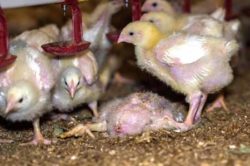 veterinarian who is interviewed in stages through the film became a whistleblower and had his life blown apart, so by comparison any changes we as consumers make, is chicken feed. I had my first understanding of the financial servitude and the shocking conditions of this type of poultry farming when I visited one many years ago run by someone we knew. He even admitted as I stood gasping for air inside this hideous hangar with hundreds of chickens, some dying in front of me, that he wasn’t making as much money as he thought he would when he signed the contract. And he later quit when he realized that he was worse off financially than when he had signed up. The poultry company in question came in every six weeks, cleaned out the hangar and the chickens, and signed him on for additional chicks, feed and antibiotics. Animal protein and fats are good for your body, but not this way. Common Sense Media suggests that this film is good for adolescents 15 years old and above to watch. Looking at what adolescents eat, I am thinking maybe even sooner.
veterinarian who is interviewed in stages through the film became a whistleblower and had his life blown apart, so by comparison any changes we as consumers make, is chicken feed. I had my first understanding of the financial servitude and the shocking conditions of this type of poultry farming when I visited one many years ago run by someone we knew. He even admitted as I stood gasping for air inside this hideous hangar with hundreds of chickens, some dying in front of me, that he wasn’t making as much money as he thought he would when he signed the contract. And he later quit when he realized that he was worse off financially than when he had signed up. The poultry company in question came in every six weeks, cleaned out the hangar and the chickens, and signed him on for additional chicks, feed and antibiotics. Animal protein and fats are good for your body, but not this way. Common Sense Media suggests that this film is good for adolescents 15 years old and above to watch. Looking at what adolescents eat, I am thinking maybe even sooner.
Help Yourself
 Temple Grandin is a scientist and pioneering advocate for transparency and accountability in raising “protein units” (full disclosure – she is my cousin). And I think reading through the articles on her website would give you greater understanding of the optimal practices in industrial poultry and meat production. She makes a forthright appearance in the film as a designer of slaughterhouses for the meat packing industry.
Temple Grandin is a scientist and pioneering advocate for transparency and accountability in raising “protein units” (full disclosure – she is my cousin). And I think reading through the articles on her website would give you greater understanding of the optimal practices in industrial poultry and meat production. She makes a forthright appearance in the film as a designer of slaughterhouses for the meat packing industry.
And if reading through her better practices and cattle management is just too mind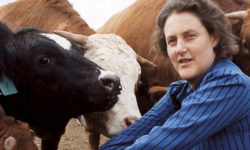 –numbing, take a look at the work that is done through the ASCPA. Their website offers a guide – which is changing as small and large producers make the decision to meet their various certifications. The site itself is wide ranging and a bit confusing, so click here to look at brands that are approved in stores throughout the US under their progam Shop With Your Heart. Also currently available in another part of their website is an online directory under their Greener World initiative. As you can see when you jump into the ASPCA website and those that are linked within, it can be overwhelming to read through all the information. I am still reading through parts a second or third time A simple guide is to look for these three labels to know you are on the right track. If you can help bring these labels to the places where you buy your food, then you have contributed a lot.
–numbing, take a look at the work that is done through the ASCPA. Their website offers a guide – which is changing as small and large producers make the decision to meet their various certifications. The site itself is wide ranging and a bit confusing, so click here to look at brands that are approved in stores throughout the US under their progam Shop With Your Heart. Also currently available in another part of their website is an online directory under their Greener World initiative. As you can see when you jump into the ASPCA website and those that are linked within, it can be overwhelming to read through all the information. I am still reading through parts a second or third time A simple guide is to look for these three labels to know you are on the right track. If you can help bring these labels to the places where you buy your food, then you have contributed a lot.
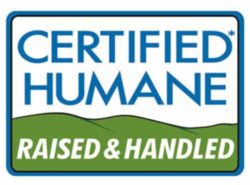 Certified Humane is an international nonprofit organization whose goal is to improve the raising of farm animals from birth through slaughter. One of their goals is to drive consumer demand for humane and responsible farm animal husbandry. When you buy products with this label, this organization assures you that the facilities meet their rigorous standards. Farmers from the US, Canada, India, and Mexico are just a few that are part of this growing membership. Their Animal Care Standards were written by Dr. Temple Grandin.I was heartened to see that the poultry carried by our local MOM grocery store has their label.
Certified Humane is an international nonprofit organization whose goal is to improve the raising of farm animals from birth through slaughter. One of their goals is to drive consumer demand for humane and responsible farm animal husbandry. When you buy products with this label, this organization assures you that the facilities meet their rigorous standards. Farmers from the US, Canada, India, and Mexico are just a few that are part of this growing membership. Their Animal Care Standards were written by Dr. Temple Grandin.I was heartened to see that the poultry carried by our local MOM grocery store has their label.
A Greener World is also an independent nonprofit certification organization that offers several types of certifications for humane treatment of farm animals and also for salmon fisheries, non GMO, organic and regenerative farming. AGW also works with these farms, ranches and fisheries to provide marketing support and consumer information about their certified members.
Global Animal Partnership is a decade-old organization that offers a tiered certification program for farms, ranches and processing facilities. It was actually the brainchild of the original CEO of Whole Foods Market, John Mackey. GAP helps its member farms and ranches with the day to day management of their animals, record keeping, practical help and educational tools to maintain sustainable and humane animal husbandry.

Kitchen Detail shares under the radar recipes, explores the art of cooking, the stories behind food, and the tools that bring it all together, while uncovering the social, political, and environmental truths that shape our culinary world.
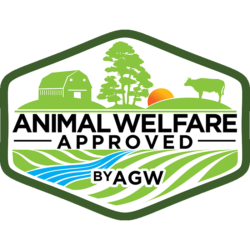
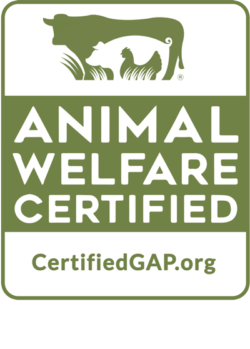




Spectacular article!! Thank you!
Great article. I guess that part of this awful poultry breeding process is also responsible for producing chicken breasts the size of turkeys with very little taste. I will definitely be getting mine at Mom”s now!!
Thank you, Nancy
Hi Linda,
“I did not pay that much attention to lables other than looking for the word “organic” or “non GMO” until I started researching this post. When I bought the Farmer Focus chicken at MOMs, i was surprised at the difference in taste to the ones I had been purchasing at Whole Foods.
Nancy